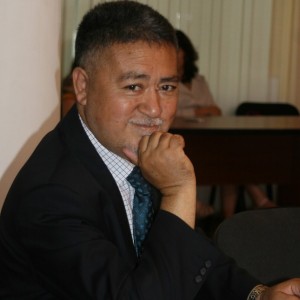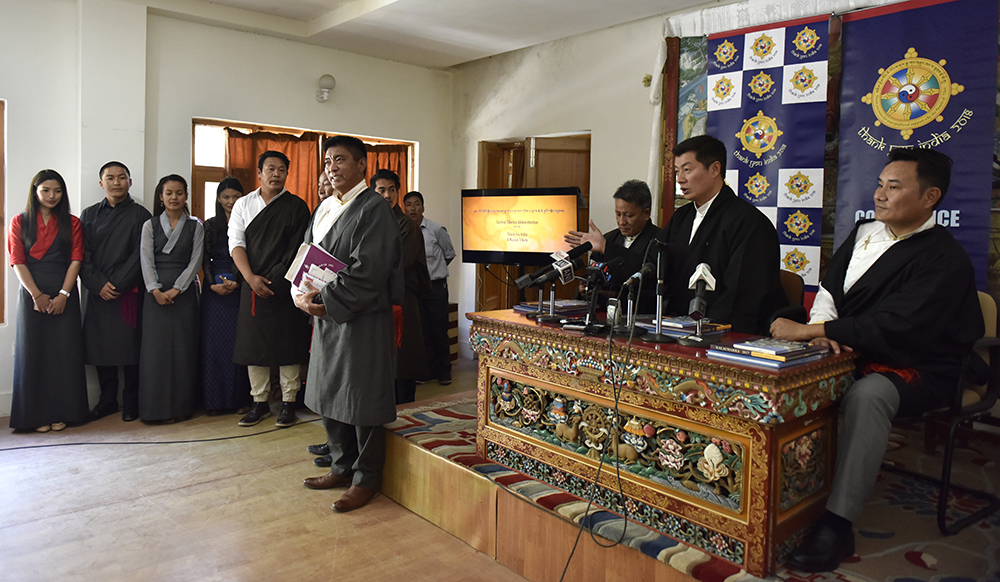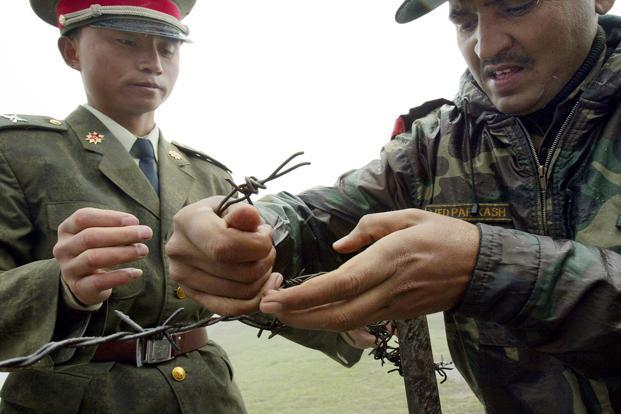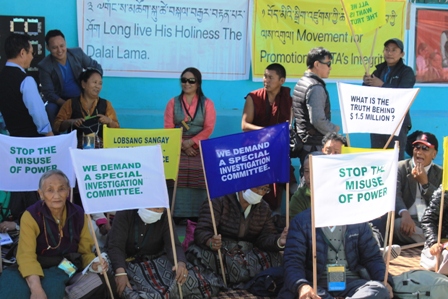The future of the Dalai Lama and the Tibetan community in-exile is becoming bleaker by the day. Reuters news agency has confirmed that India is toning down its stance against China, in hopes of calming ties and averting stand-offs like the Doklam border crisis last year. That was an incident which almost brought India and China to the brink of war, a situation neither country ultimately wanted to undertake.
As India pushes to form stronger bilateral ties with China, the Tibetans have found themselves powerless in this new political dynamic as they become increasingly less relevant to the Indians. Former Indian Ambassador, Professor Phunchok Stobdan, has described the situation clearly, stating:
Tibet has utility to irritate China, but it is becoming costly for us now. They are punishing us.

Professor Phunchok Stobdan is an academician, diplomat, author, foreign policy expert, and former Indian Ambassador to Kyrgyzstan. He is currently a senior fellow at the Institute for Defence Studies and Analyses in New Delhi, and writes columns for the Indian Express and other national dailies in India.
Prof. Stobdan’s remarks are not to be taken lightly — having served as Indian Ambassador to Kyrgyzstan, his comments arise from first-hand experience and knowledge of Indian diplomacy, rather than hearsay. And according to Prof. Stobdan, Tibetans have fallen in their value to the Indian government now that politics in the region have shifted.
It is about time the Tibetans face such a dramatic volte-face when it comes to their relations with India. Since they first entered exile in 1959, Tibetans in India have been given free reign and thanks to a reverence for His Holiness the Dalai Lama as a holy man, the Indian government have sought to maintain close relations with the Tibetans. However, this relationship has come at the cost of increased tensions with China, something which India is no longer willing to suffer – in Prof. Stobdan’s words, supporting the Tibetans is now a ‘costly’ endeavour for India. As a result, India is now giving Tibetans the cold shoulder to mitigate unwanted stressful situations with its neighbor. Some recent examples include:

In a desperate attempt to recoup Indian support, the Tibetan administration under the leadership of President Lobsang Sangay held a press conference in the little town of Dharamsala in north India to launch the “Thank You India” campaign.

In 2017, Chinese and Indian troops were locked in a 73-day standoff over the Doklam border issue. Doklam is located near Sikkim in North India.
- The Dalai Lama cancelled his visit to the North Indian border state of Sikkim, originally scheduled for March 2018, so that China would not be offended by his presence. Sikkim borders what the Tibetans consider Tibet, and what the Chinese consider the Tibet Autonomous Region. Visits by the Dalai Lama (or any Tibetan leader) to areas like Sikkim and other Indian border states are seen by China as being deliberately provocative. China considers the Dalai Lama to be a ‘separatist’ and a destabilizing factor in the Tibet Autonomous Region. So now, even the Dalai Lama’s movements around India are being restricted due to fears that his travels will adversely affect India’s relationship with China. This is an unprecedented move and has never happened in the past six decades when India sought to provoke China and so gave the Dalai Lama total freedom to travel wherever he pleased.
As India grows more assertive and overt with her new policy of befriending China, the Central Tibetan Administration (CTA; Tibetan leadership based in Dharamsala) have been left floundering after being repeatedly sidelined. Having relied on India for the past 60 years, they are now trying to placate the government through mere niceties, lest they are left out in the cold completely. Imagine – we are only into the first three months of 2018 and already all of this has happened to the Tibetan leadership. What else lies in store for the CTA for the next nine months of the year?

A group of Tibetans calling themselves the “Truth Seeking Volunteers” held peaceful protests over eight days calling for the impeachment of incumbent Tibetan President Lobsang Sangay and a serving legislator.
Tibetan President Sikyong Lobsang Sangay, himself a controversial figure now facing protests from his own people, has stated that the CTA understands why the Indian government are taking measures to befriend China. According to him, the CTA are not worried and have no reason to be.
But then what else can a leader without a country say? Underneath all the false bravado and posturing we have come to expect of him, everyone knows he is worried about losing Indian support as he watches the Tibetans’ main supporter moving to become bedfellows with their sworn enemy, China.
As India and China become closer, will the worst nightmare of the Tibetans in-exile come true? Will they be sidelined completely by the Indian government and lose the one thing keeping their leadership afloat, the support of a legitimate nation state? Once that support is gone, what becomes of the Tibetans? The answer is something that Reuters has made clear – on their own, without the backing of India, the Tibetan leadership wields no power and exists at the mercy of other governments’ politics. Unfortunately for the CTA, it seems their awakening to this truth has come too little, too late.
Dalai Lama faces cold shoulder as India looks to
improve China ties

Click to enlarge (Source: https://www.reuters.com/article/us-india-china/dalai-lama-faces-cold-shoulder-as-india-looks-to-improve-china-ties-idUSKBN1H51O7)
MORE NEWS LIKE THIS